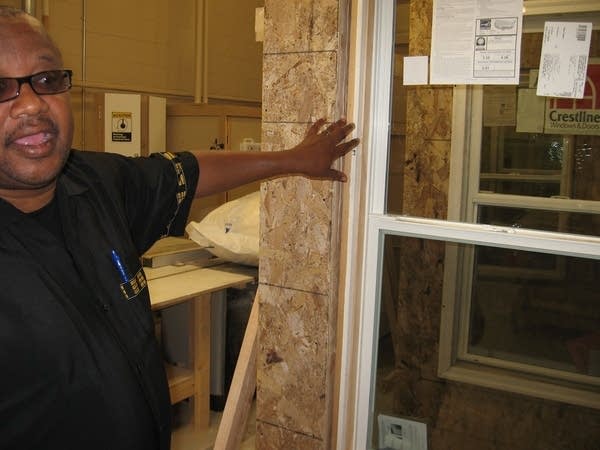Minority contractors look for their share of the stimulus
Go Deeper.
Create an account or log in to save stories.
Like this?
Thanks for liking this story! We have added it to a list of your favorite stories.

As federal stimulus money pours into cities, minority contractors are hoping to get a share of the work.
Later this year, Minneapolis city officials expect to receive nearly $4 million in federal stimulus money to make residential, commercial and municipal buildings more energy efficient.
The city and the federal government regularly set diversity goals for hiring and contracting. But Cathy Polasky, director of economic policy and development for Minneapolis says the Department of Energy hasn't set diversity goals for the money.
She says the department wants first and foremost for the city to keep track of how many jobs have been created with the funds, and that by conservative estimates, the $3.9 million could directly translate into anywhere between 15 and 30 new or saved jobs.
Turn Up Your Support
MPR News helps you turn down the noise and build shared understanding. Turn up your support for this public resource and keep trusted journalism accessible to all.
Polasky says the city is committed to being inclusive.
"I think we always go above and beyond what the federal mandate is, so we will be looking to encourage both local hiring and using the workforce agreements we've used in the past to encourage hiring of women and minorities," she said.

At Summit Academy, a non-profit school in north Minneapolis, director Louis King is working to train people to get jobs in the construction trades.
"All these folks you see are graduating in a couple of weeks and will be ready for the workforce," King said.
About 30 construction-helmeted and reflector-vested students are at work in a parking lot right next to the school. Nearly all are people of color.
King says some of them are homeless, or one argument away from it. They hammer and saw inside and out of a one-room demonstration house.
"That's the green house, it's going to be a 'smart' house, with solar in it. I'll also show you how the weatherization applications are set in a house," King explained.
The students learn about the newest materials and methods used to build and weatherize homes. Federal stimulus dollars will pay for this kind of work.
But King says it won't be that easy for new workers to get jobs. There are already experienced construction workers sitting on the bench who want to get back in the workforce before new people come in.
King says historically, people of color have had a tough time getting work in construction.
"This is nothing new. I find it funny that when times were booming, they didn't have room for our people," King said. "Now that times are tough, they don't have room for our people. So what's the difference for us? For us it's always a fight when it comes to getting a job. But I say, you can't have it both ways."

One of the groups trying to bring greater diversity to the construction trades is the National Association of Minority Contractors. Local chapter president James Frisco says times are tough for all construction companies.
The economic downturn has created a leveling effect according to Frisco, which he hopes will foster greater cooperation in the industry.
"The large general contracts from Ryan, McGough, PCL - all of those large general contractors - have also laid off 30 to 40 percent of their people," he said. "So there's a greater willingness today to work with some of those underrepresented groups to make sure we all get a piece of the pie."
Frisco says he'd like to see 25 percent of the federal energy efficiency grant money set aside for minority and women-owned businesses.
It's not clear that this will be the same target for the city of Minneapolis. The city's written plan for the funds is due to the federal government next week.
About 20 percent of the funds will be made available for work on commercial buildings. The city will provide loans for small business owners to help them pay for the work.
Another 20 percent will be up for bid to organizations which make efficiency improvements to homes.
And about 50 percent of the funds will be spent to perform energy audits and to pay for improvements to city buildings and park board facilities. The rest of the federal money will pay for program administration.
The money could start rolling in at the end of the summer.



